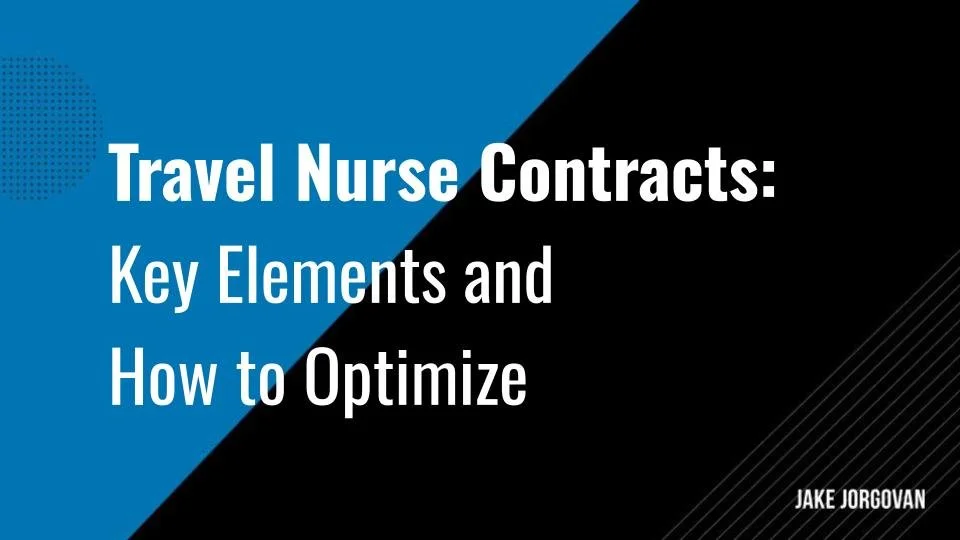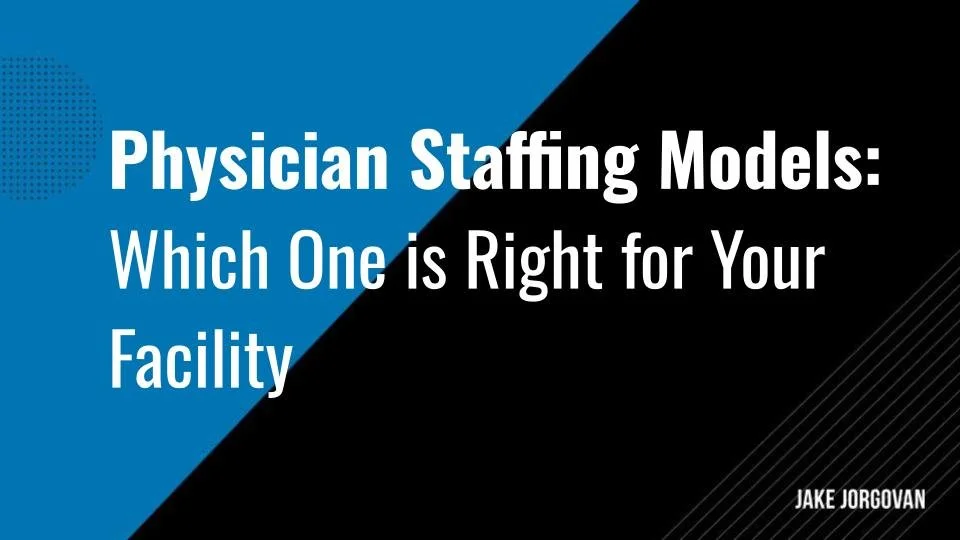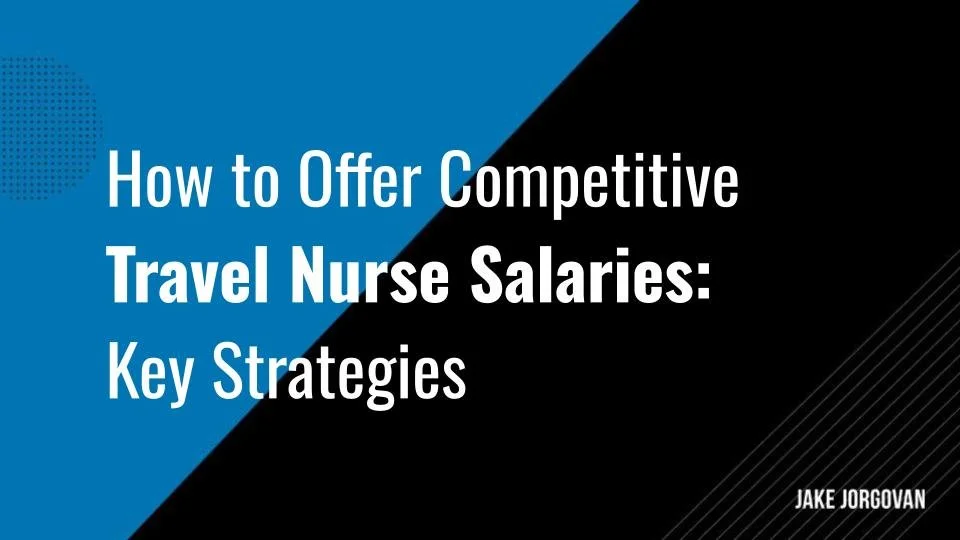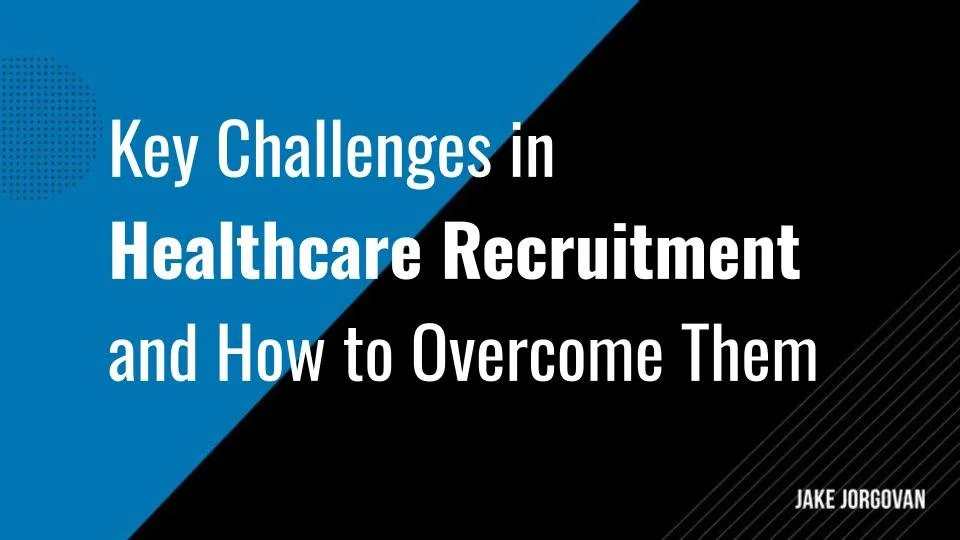7 Key Challenges in Healthcare Recruitment and How to Overcome Them
Healthcare recruitment stands at a critical juncture. As demands on the industry intensify, the gaps in workforce capacity become more apparent.
Recruitment strategies can sometimes lag behind your needs, muddling through outdated practices and market shifts.
Addressing these recruitment challenges is not optional; it directly correlates to the quality of the patient care you deliver.
This article delves into the prevalent obstacles and pragmatic solutions that can strengthen your healthcare staffing.
So, let’s begin.
Challenge 1: Shortage of Qualified Healthcare Professionals
People face escalating healthcare demands; supply doesn't keep up.
Aging populations spike healthcare worker needs and educational outputs falter. Staff shortages strain your operational capacities. Economic pressures tighten, complicating recruitment further.
Your existing team bears excessive workloads so they are at high risk for burnout. Quality dips as your professionals juggle multiple roles. Morale suffers, driving even dedicated staff toward the exit.
These dynamics prompt an urgent reassessment of recruitment tactics.
Develop partnerships with educational institutions. Collaborate on curriculum development, offer internships and training opportunities, and ensure a steady pipeline of graduates.
Offer competitive compensation and benefits. Research market rates and adjust your salary structures accordingly. Include comprehensive health and retirement packages.
Implement workforce development programs. Identify skill gaps within your team, provide continuous education and training, and encourage career advancement within your organization.
Insider Tip:
Forge exclusive relationships with top-tier nursing and medical schools. Prioritize early talent identification by actively participating in academic events. Offer unique, tailored benefits that resonate with emerging healthcare professionals' desires, like flexible scheduling and career customization options. That way, you’ll set your institution apart in a competitive field.
Challenge 2: High Turnover Rates
High turnover, especially among nurses and young staff, strains your operations. This churn erodes team cohesion and patient trust. Constantly training new hires saps resources and focus.
Besides, high turnover disrupts continuity in patient care. It leads to inconsistent treatment outcomes.
Also, attrition costs escalate, draining your budget substantially.
To combat high turnover rates effectively, implement these targeted strategies:
Implement robust retention strategies. Conduct exit interviews to identify patterns and then address common concerns with actionable changes. Foster an open dialogue with current staff.
Offer career development and growth opportunities. Establish clear career pathways within your organization. Support further education and certifications financially.
Create a supportive work environment. Prioritize mental health with accessible resources. Implement flexible scheduling to improve work-life balance. Recognize and reward staff efforts consistently.
These methods will help stabilize your workforce, enhance job satisfaction, and ultimately improve retention rates.
Insider tip:
Leverage data analytics to predict turnover trends. Monitor staff engagement through regular pulse surveys and, more importantly, act swiftly on feedback to preempt potential exits. Tailor your interventions specifically for high-risk departments. Focusing on the unique challenges and aspirations of the employees within those areas will improve your retention rate effectively.
Challenge 3: Competition for Top Talent
Your sector battles fiercely for top healthcare talent. Each organization vies to attract skilled professionals.
And rapid industry growth fuels this intense competition.
That means adequate staffing becomes harder, and specialized roles especially face fierce bidding wars.
These dynamics inflate your recruitment costs and lengthen timelines.
To effectively combat competition for top healthcare talent, follow these strategies:
Strengthen employer branding. Craft a compelling organizational story. Showcase your culture and mission across media. Ensure consistency in message and values presentation.
Offer attractive employee value propositions (EVPs). Highlight unique benefits specific to your organization. Emphasize work-life balance, career development, and impact.
Utilize referral programs and internal promotions. Encourage current employees to refer qualified peers. Reward successful referrals to motivate participation. Promote from within to demonstrate career progression opportunities.
Implementing these steps will make your organization more appealing to top talent and improve your competitive edge in recruitment.
Insider tip:
Engage your top performers in shaping EVPs to ensure they resonate with potential hires. Host open days virtually to exhibit your culture and operational environment. This direct glimpse into your workplace can tip decisions in your favor, distinguishing your offers from competitors in the healthcare sector.
Challenge 4: Long Time-to-Hire
Long hiring processes in healthcare hamper efficiency. For example, you need multiple interview rounds to hire the best professionals, but these delay decision-making significantly.
Extensive background checks are alsi mandatory yet time-consuming.
Not to mention compliance requirements that add additional layers, further slowing progress.
Each delay risks losing candidates to faster offers. Streamlining these procedures is crucial to improving your recruitment cycle's speed.
To effectively reduce long hiring times, consider these strategies:
Automate parts of the recruitment process. Implement software for initial applicant screening. Use systems that auto-schedule interviews based on availability.
Use advanced screening tools. Incorporate skill assessment software to evaluate candidates. Employ AI-driven tools to quickly sort through applications.
Reduce bottlenecks in hiring manager review stages. Set clear deadlines for each review phase. Use collaborative platforms to facilitate quicker feedback.
These steps will streamline your recruitment, ensuring that positions are filled more rapidly and improving overall operational efficiency in your healthcare setting.
Insider tip:
Integrate predictive analytics to forecast hiring needs. This allows proactive recruitment, aligning talent acquisition with your future staffing requirements. Of course, regularly review and optimize your recruitment metrics to fine-tune your processes. This approach minimizes delays and ensures you capture top talent swiftly and effectively.
Challenge 5: Budget Constraints
Financial constraints and budget cuts directly impact recruitment efforts. When your healthcare organization can’t consistently offer competitive wages, its ability to attract talent is limited.
Quality candidates slip away to higher-paying positions. Your staffing suffers, leading to potential care deficiencies.
And investments in advanced recruitment technologies become challenging.
Remember that each financial decision affects your staffing quality.
So, careful budget management becomes key to operational success.
To navigate budget constraints in healthcare recruitment, implement these strategic actions:
Leverage financial incentives like loan repayment programs. Offer these as part of your benefits package. Attract candidates who value long-term financial support.
Seek alternative funding sources. Explore grants and partnerships with educational institutions. These can subsidize training and hiring costs.
Invest in technology to reduce recruitment costs. Utilize automated systems for initial screenings. Adopt digital tools for efficient applicant tracking.
Implementing these strategies will help you maintain competitive recruitment practices despite financial limitations so you can attract and retain necessary healthcare talent. Additionally, consider exploring medical software development opportunities to create custom solutions that streamline operations and potentially reduce costs, making your organization more attractive to top talent in the long run.
Insider tip:
Consider public-private partnerships to bolster your funding. These alliances can provide financial backing and resources, allowing you to offer better compensation packages. Carefully negotiate terms that align with your strategic hiring goals and ensure sustainability without compromising your organization's autonomy or mission.
Challenge 6: Adapting to New Technologies
New technologies streamline recruitment processes in healthcare.
For example, they enable precise candidate targeting and efficient screening.
Automated tools also cut down lengthy hiring cycles.
Besides, advanced data analytics improve your decision-making accuracy.
That’s how you can stay competitive in a fast-evolving market.
However, adopting new technologies presents significant challenges.
Initial costs are high, you can face some staff resistance, and training needs escalate, straining your resources.
Plus, integration issues may disrupt existing systems. Data security concerns require stringent safeguards.
Overcoming these hurdles demands careful planning and management.
To integrate new technologies into your recruitment process, consider these steps:
Train staff to use new recruitment technologies. Offer comprehensive training sessions and provide ongoing support and refresher courses. Ensure ease of adoption through user-friendly interfaces.
Implement AI and data analytics for better candidate matching. Utilize algorithms to parse resumes efficiently. Analyze data to predict candidate success. Obviously, you must customize the software to fit your specific needs.
Use technology to enhance the candidate experience. Implement automated scheduling for interviews and provide real-time application status updates. Ensure all digital touchpoints are optimized for user interaction.
These strategies will facilitate smoother technology adoption, improving your recruitment process and candidate engagement.
Insider tip:
Create a technology task force within your HR department. This team focuses on identifying and piloting cutting-edge recruitment technologies before wide-scale implementation. That’s how you ensure technology fits your unique needs, minimizing disruptions and maximizing efficiency as new systems integrate into your recruitment workflow.
Challenge 7. Regulatory and Compliance Issues
Navigating healthcare regulations challenges your recruitment efforts because compliance requirements are complex and ever-changing.
Each misstep risks legal repercussions, impacting operations.
That’s why accurate, thorough candidate screening is mandatory.
And your recruitment practices must align with industry standards.
This continuous adaptation requires diligent oversight and resources.
To effectively navigate regulatory and compliance issues in healthcare recruitment, adopt these strategies:
Stay updated on regulatory changes. Subscribe to regulatory updates and attend industry seminars regularly. You can even seek legal guidance to interpret new regulations accurately.
Implement robust compliance protocols. Develop standard operating procedures for recruitment and conduct thorough background checks systematically. More importantly, train your team on compliance adherence.
Maintain accurate documentation throughout the recruitment process. Use digital systems to log all recruitment activities and audit your recruitment documentation regularly. Ensure all records are easily accessible for regulatory reviews.
These steps will help you manage compliance confidently, minimizing legal risks while maintaining a high standard of recruitment practices.
Insider tip:
Establish a compliance liaison within your HR team. This person specializes in healthcare regulations, ensuring your recruitment aligns with the latest legal standards. Regularly schedule compliance training sessions for all HR personnel, enhancing awareness and capability in handling the complexities of healthcare recruitment effectively.
Strategic Solutions for Overcoming Healthcare Recruitment Challenges: Enhancing Care Through Effective Staffing
Recruitment in healthcare is intricately tied to patient care quality.
The challenges we outlined in this article—staff shortages, high turnover, competitive hiring landscapes, lengthy hiring processes, budget constraints, technology adaptation, and regulatory compliance—are interconnected.
Each impacts your ability to deliver exemplary healthcare services.
Addressing these issues requires a proactive, strategic approach: forging educational partnerships, implementing robust retention strategies, enhancing employer branding, leveraging financial strategies, embracing technology, and maintaining stringent compliance measures.
These actions are crucial for enhancing the operational efficacy and care standards of your healthcare institutions.
So, adopt our step-by-step strategies above to improve your recruitment processes and, ultimately, your healthcare delivery.





































